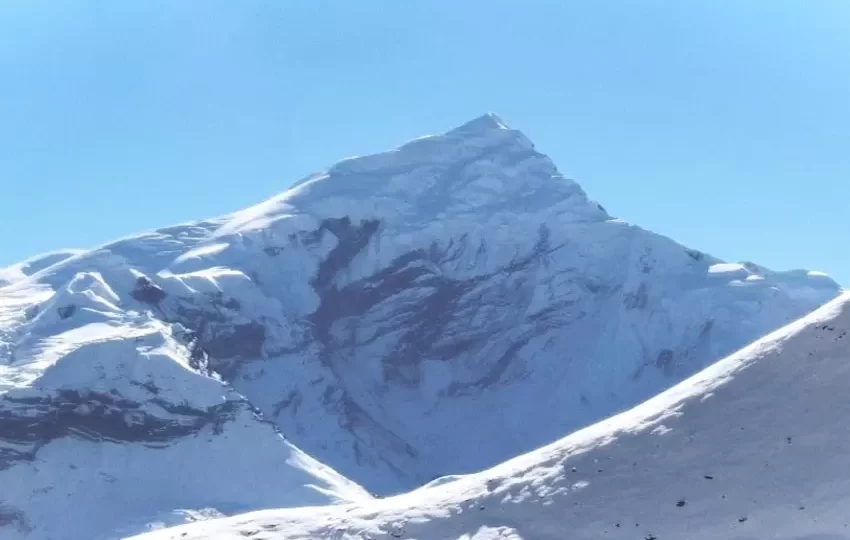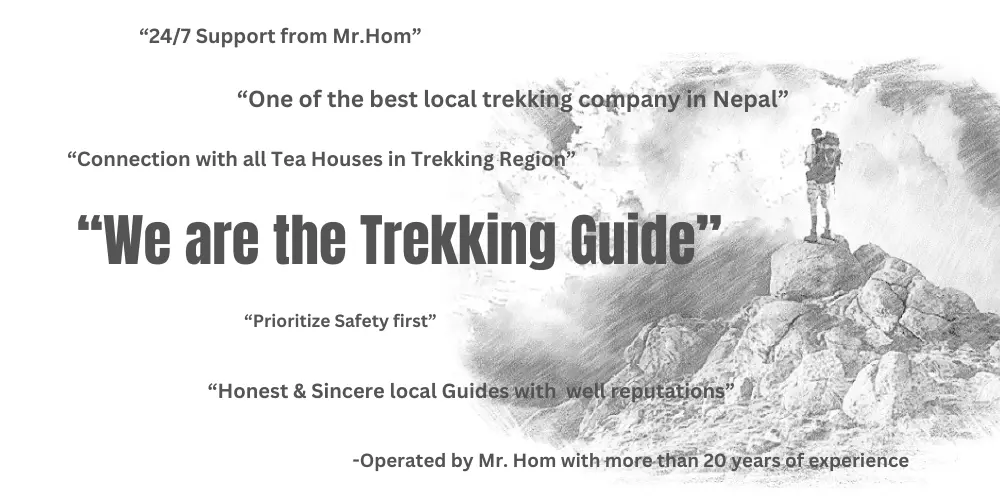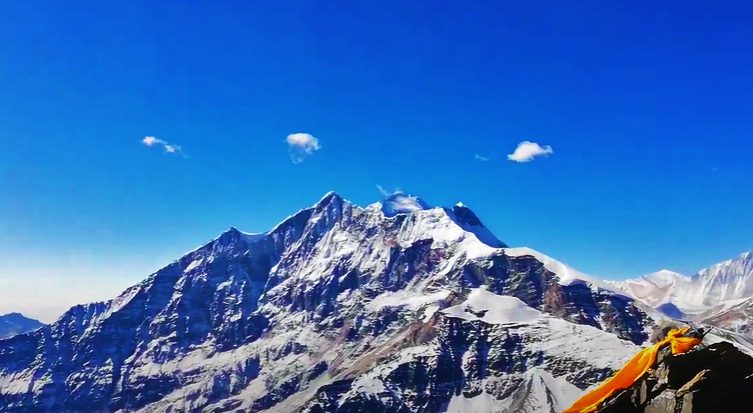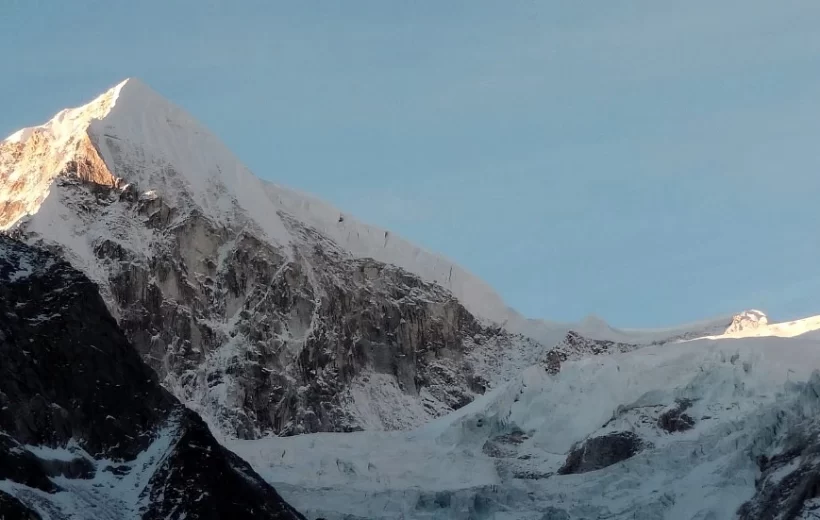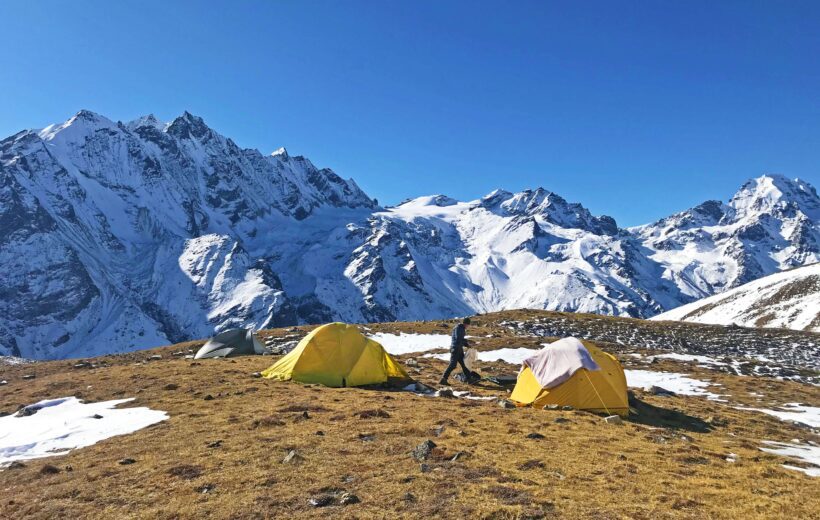Nestled in the heart of Nepal's majestic Annapurna region lies an adventure that beckons the bold and the curious, an odyssey that unveils the untamed beauty of nature and the thrill of conquering one of the Himalayas' prized peaks – Chulu West. This journey is not merely a climb; it's an immersive experience that tests your resilience, ignites your spirit of adventure, and connects you with the profound cultural tapestry of the region.
Cost Inclusion & Exclusion in Chulu West Peak Climbing:
Enjoy a Welcome dinner
Overnight stay in Kathmandu, "Hotel Blue Horizon", during your three-night stay in Kathmandu.
Teahouse, lodges, and tented stays while trekking and climbing.
Kathmandu long sightseeing tour. Includes a knowledgeable guide, private transportation, and entrance fees to UNESCO World Heritage Sites.
Full Board Meal: BLD w
3 cups of tea/coffee provided during the trek.
Navigate confidently with Experienced Trekking and Climbing guides.
Every two climbers will be supported by one dedicated porter.
Our dedicated Crew and Support team's expenses are covered.
Traverse freely with all-encompassing trekking and climbing permits, along with necessary paperwork.
Your guides' and porters' essentials, such as meals, insurance, salary, lodging, transportation, flights, and equipment, are all taken care of.
Safety is paramount with a well-equipped first aid kit readily available.
Stay snug with provided Sleeping bags and Down Jackets for both climbing and trekking. (On Rent)
All Government and Local Taxes are included - no hidden charges.
Be at ease, as arrangements for complex health conditions are assisted, and funded by your travel insurance.
Take a piece of the journey home with a company t-shirt and cap.
Effortlessly organize your belongings with an NPA company durable duffel bag
Celebrate your accomplishment with an official Certification of Achievement.
Bid farewell to this remarkable journey with a memorable farewell dinner.
Cost Exclusion:
International flight expenses are not covered.
Nepal Visa fees are not included.
Any charges for excess baggage are not part of the package.
Lunch and Dinner in Kathmandu are not provided.
In case of early arrival, late departure, or returning from trekking ahead of schedule, any extra night accommodation in Kathmandu is not included.
Personal expenditures such as shopping, snacks, bar bills, bottled water, shower usage, Wi-Fi, laundry, phone calls, and more are not within the package.
Your personal clothing, gear, and equipment are not supplied.
The Altitude Chamber (PAC) or oxygen provisions are not part of the package.
Travel insurance coverage is not provided and is your responsibility to arrange it.
Tips for guides and porters
Any items or services not explicitly mentioned in the inclusions are not covered by the package.
Chulu East vs. Chulu West:
In the heart of Nepal's Annapurna region lies a fascinating dilemma for trekkers and climbers – the choice between Chulu East and Chulu West peaks. Both offer a tantalizing blend of adventure, panoramic vistas, and cultural exploration, yet each possesses its own unique allure.
The Majesty of Chulu East: Rising to an impressive elevation of 6,584 meters (21,601 feet), Chulu East presents an exhilarating challenge that entices climbers with a moderate level of experience. Its ascent involves a mix of trekking and basic mountaineering skills, including ice axe and crampon usage. While not overly technical, it demands an understanding of rope work and safe glacier travel.
Chulu West: The Mighty Challenger: Chulu West, standing tall at 6,419 meters (21,059 feet), presents a slightly more formidable adventure. This peak requires a higher level of technical climbing skills, making it ideal for those seeking a greater challenge. The ascent involves steeper slopes, icy sections, and rock scrambling.
Choosing Your Adventure: The choice between Chulu East and Chulu West largely depends on your experience, skillset, and appetite for challenge. If you're relatively new to mountaineering and seeking an introduction to Himalayan climbing, Chulu East might be your ideal pick. On the other hand, if you're an experienced climber eager to push your limits, Chulu West beckons with its greater technical demands.
Why Chulu West Peak Climbing?
Imagine setting foot in Kathmandu, a city buzzing with life and energy, preparing for a journey that promises to be a life-changing escapade. As you venture into the Annapurna region, the allure of the mountains gradually engulfs you, and the adventure unfurls.
The Chulu West Peak trekking and climbing odyssey isn't just about reaching the summit; it's about embracing every step of the journey. From the heartwarming hospitality of Kathmandu to the picturesque trails that lead to the base of Chulu West, every moment is a brushstroke on the canvas of your expedition.
Chulu West Peak Climbing Route:
The journey begins with a drive to Besishahar, a city that marks the starting point of your trek. Along the way, you'll witness the vibrant tapestry of rural Nepal – lush valleys, terraced farming, and traditional villages untouched by modernity. As you ascend through Jagat, Chamje, and Dharapani, you'll be captivated by the warmth of local communities and the gradual transition in landscapes.
First Acclimatization:
Then comes the acclimatization phase in the stunning village of Manang. A day of exploration takes you to Bhojo Gompa, Gaganpurna Lake, and the Himalayan Rescue Association office, preparing you for the challenges ahead. Here, you'll experience the magic of adaptation, a vital key to your success.
Chulu West Base Camp:
The trail leads to Chulu West Base Camp, where anticipation blends with excitement. Under the guidance of seasoned climbing leaders, you'll be trained in using ice axes, crampons, and ropes – tools that will aid your ascent. The camaraderie among fellow climbers becomes a source of strength, fostering a sense of unity amidst the towering peaks.
Summit Day:
The summit day arrives, a culmination of determination and preparation. Slowly ascending the icy slopes, you'll rely on your training and the support of your team. As the first rays of sun touch the Annapurna range, a panorama of snow-capped peaks unveils itself, a sight etched forever in your memory.
Thorong-La Pass:
However, the journey doesn't end at the summit. Descending Thorong La Pass, traversing Kagbeni, and exploring Pokhara's serene beauty are chapters that enrich your story.
The journey teaches you that conquering a peak isn't merely about the destination; it's about savoring every moment of the expedition.
Best Time for Chulu West Peak Climbing:
For those who hear the mountains' call, timing is crucial. Spring and autumn provide ideal conditions, with temperate weather and clear skies. But for those who seek a different challenge, the winter months offer serene landscapes blanketed in snow. It's a testament to the allure of Chulu West – every season holds its charm and demands a unique set of skills.
Permits for Chulu West Peak Climbing:
While the allure of adventure is strong, practicalities are equally important. Permit requisites are meticulously arranged, from the Trekkers' Information Management System (TIMS) to the Annapurna Conservation Area Project (ACAP) Permit and the Peak Climbing Permit from the National Mountaineering Association. The intricacies are managed, ensuring your focus remains on the journey ahead.
Navigating the Difficulty of Chulu West Peak Climbing
Embarking on the adventure of conquering Chulu West Peak in Nepal's Annapurna region isn't a mere trek; it's a test of your determination, stamina, and mental fortitude. This climb holds allure for both novices with dreams of Himalayan summits and experienced climbers seeking new challenges. However, understanding the level of difficulty is crucial in preparing yourself physically and mentally for this extraordinary journey.
The Nuanced Terrain: The trekking route leading to Chulu West Base Camp is a mix of picturesque landscapes and rugged terrain. The journey begins gently, meandering through charming villages and verdant valleys. However, as altitude increases, so does the level of difficulty. The ascent becomes steeper, and the trails transform into rocky paths demanding careful navigation. The terrain's variation from lush valleys to icy slopes requires an adaptable approach, making each day's trek a unique experience.
Altitude and Acclimatization: The Himalayas' soaring heights come with a challenge – altitude. As you ascend, the air becomes thinner, affecting oxygen levels and your body's ability to perform. This can lead to altitude sickness, a serious concern for climbers. Acclimatization, the process of allowing your body to adjust to higher altitudes, is paramount. The itinerary includes strategic rest days for acclimatization in Manang. These days are crucial for minimizing the risks associated with altitude-related illnesses and ensuring a safer and more enjoyable climb.
Climbing Skills: While not technical in the realm of mountaineering, Chulu West Peak climbing requires some basic climbing skills. The ascent involves using ropes, crampons, and ice axes to navigate icy slopes and rocky sections. However, experienced guides are on hand to provide comprehensive training before the climb and to accompany you throughout, making the climb accessible even for those with limited climbing experience.
Physical Fitness: Physical preparation is paramount. A combination of cardiovascular fitness, lower body strength, and endurance is essential. Regular cardiovascular exercises, such as hiking, jogging, or cycling, are beneficial. Strengthening exercises for your legs, core, and upper body will help you navigate the challenging terrain and ascend with confidence.
Mental Resilience: Climbing a peak like Chulu West requires mental strength. The journey is as much about overcoming self-doubt and pushing your limits as it is about physical prowess. The ability to adapt to changing conditions, cope with discomfort, and maintain a positive mindset can make all the difference.
Choosing the Right Season: The timing of your climb can significantly impact the difficulty level. Spring (March to May) and autumn (September to November) offer the best weather conditions, with clear skies and stable temperatures. These seasons attract climbers from around the world, making the trails busier. Winter (December to February) provides serene landscapes but demands greater cold weather preparedness and the ability to navigate snowy terrain.
Guides and Support: An experienced climbing guide is your ally in conquering Chulu West Peak. They provide invaluable guidance, manage logistics, ensure safety, and offer the necessary training. A well-organized itinerary that includes acclimatization days and gradual ascents is designed to minimize difficulties and enhance your chances of success.
